Anaemia: what it is, causes, symptoms, diagnosis, treatment, prognosis
Anaemia is a disease in which the body lacks red blood cells.


Learn more about our editorial process
.

Learn more about our editorial process
.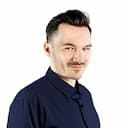

Learn more about our editorial process
.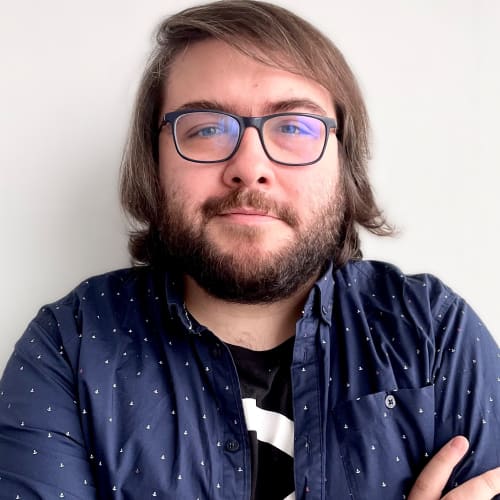

Learn more about our editorial process
.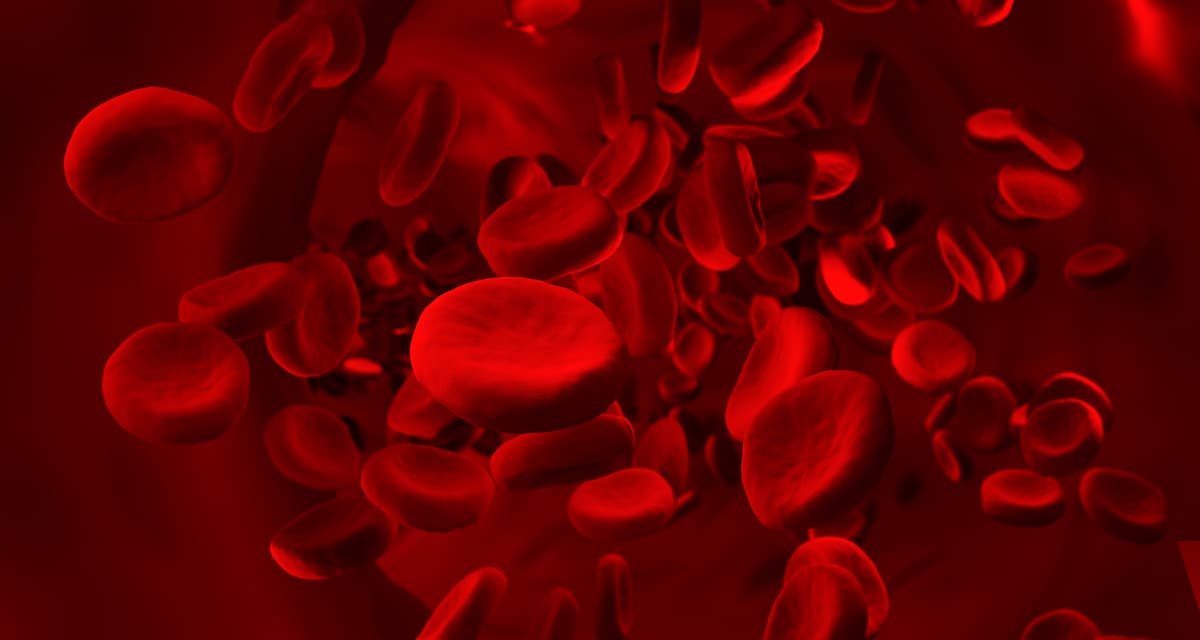
Why you can trust us
Articles on Natu.Care are written based on scientific research, data from government websites and other reliable sources. The texts are written in cooperation with doctors, nutritionists and other health and beauty experts. Articles are reviewed before publication and during significant updates.
.Learn more about our editorial process
.Information about advertisements
Content on Natu.Care may contain links to products from the sale of which we may receive a commission. When creating content, we adhere to high editorial standards and take care to be objective about the products discussed. The presence of affiliate links is not dictated by our partners, and we select the products we review ourselves completely independently.
.Learn more about our terms and Conditions
.Anemia is one of the most common diseases in the world. It affects one in three people - in your family and among your friends. In its early stages it is completely harmless, but untreated anaemia can even lead to death.
Lack of fuel in your car will mean you won't go anywhere. And one of the main symptoms of anaemia is a lack of 'fuel' in the body. Constant fatigue and lack of energy, which is constantly increasing in intensity, can prevent you from functioning on a daily basis.
Anaemia can be a very serious condition.
Anaemia, however, can be prevented and effectively treated. See how and learn about the tips of Dr Witold Tomaszewski, MD.
Anemia can be prevented and effectively treated.
From this article you will learn:
.- What anaemia is and what types of anaemia there are. .
- What are the symptoms and causes of anaemia. .
- How is anaemia diagnosed and treated.
- What is the prognosis of anaemia?
- What is the prognosis for people with anaemia and how to prevent it. .
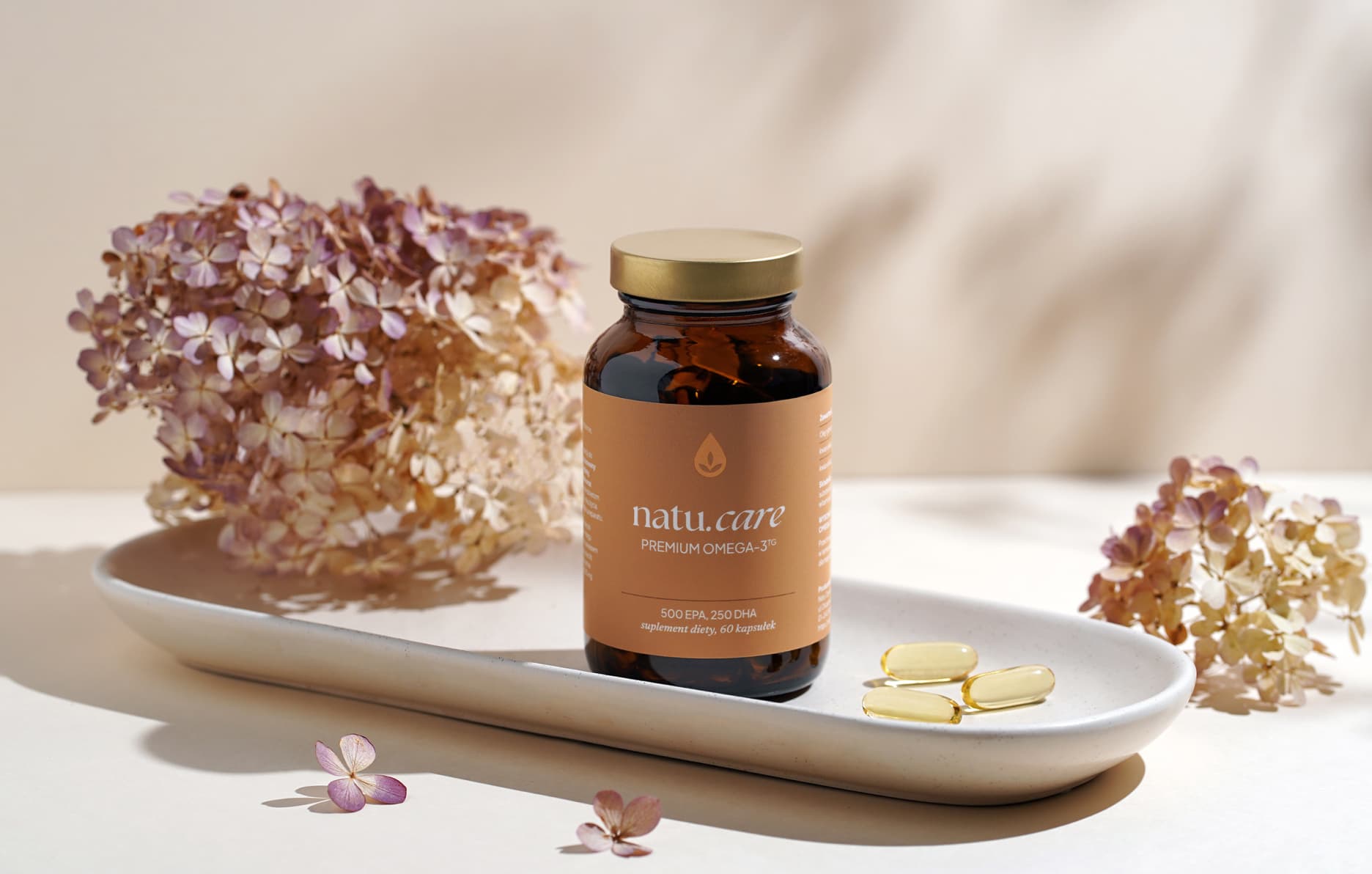
Sprawdź, za co pokochały go tysiące klientek Natu.Care Premium Omega-3ᵀᴳ -15% z kodem BLOG15
Natu.Care Omega-3ᵀᴳ Premium
Natu.Care Omega-3ᵀᴳ Premium dla zdrowia serca, mózgu i odporności. Najlepsza przyswajalność. Optymalna dawka 750 mg. Przebadana przez niezależne laboratorium.
Zobacz więcej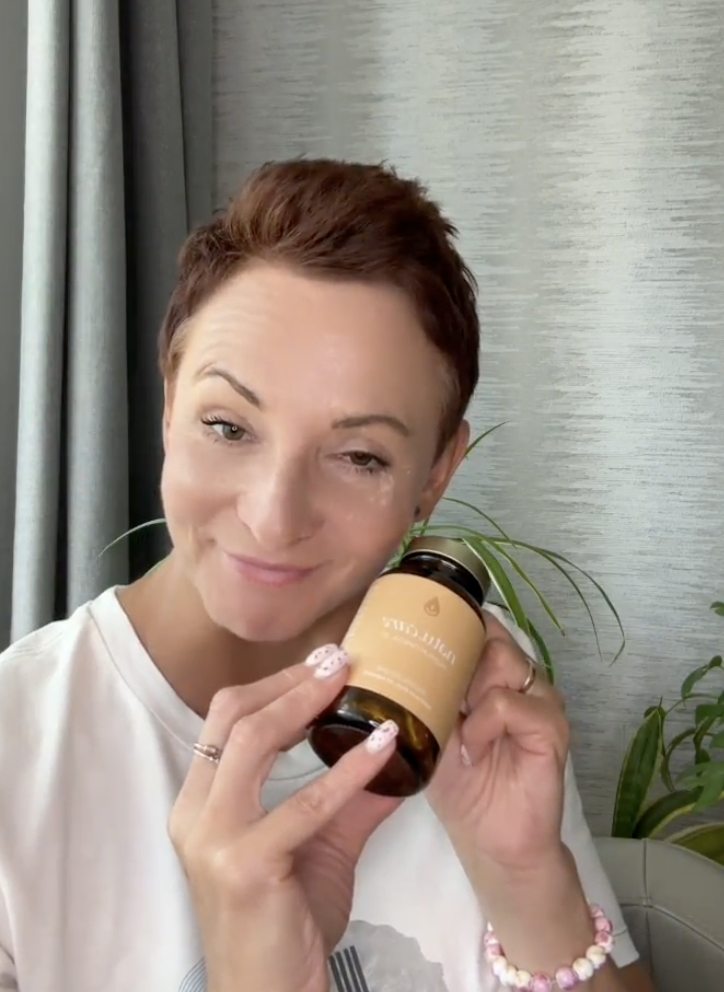
Produkt ma super skład, transparentną etykietę i co dla mnie jest ważne – małe kapsułki do połknięcia. Nie ma też nieprzyjemnego efektu odbijania rybą, który miałam spożywając inne produkty. Widzę znaczną poprawę odporności. Polecam!@Kasia P.
See also:
.What is anaemia?
.Anaemia (or anaemia) is a condition in which the body lacks the red blood cells needed to transport oxygen. Oxygen is responsible for powering the body's cells - it provides us with energy. Therefore, the most common symptom of anaemia is a feeling of chronic fatigue.
How common is anaemia?
.Anaemia is a serious public health problem. The condition mainly affects children and pregnant women. According to the WHO, 42% of children younger than 5 years and 40% of pregnant women suffer from anaemia. If we consider the global population, statistics say that one in three people worldwide has anaemia.
What are the types of anaemia?
.There are more than 400 types of anaemia. Find out more about some of the most common types of this condition below.
Deficiency anaemias
.- Iron deficiency anaemia. This is the most common type of anaemia. The body needs iron to produce haemoglobin, which is responsible for transporting oxygen in the body. In most cases, iron deficiency anaemia affects pregnant women. Its source can also be heavy menstruation (due to blood loss), gastric or small bowel ulcer or colon cancer. .
- Megaloblastic anaemia. In addition to iron, the body also needs folic acid and vitamin B12 to produce enough red blood cells. A deficiency of these components can result in too few red blood cells in the body. .
- Malignant anaemia. An autoimmune disease, one of the symptoms of which is vitamin B12 deficiency due to malabsorption disorders.
Hereditary anaemias
.- Sickle cell anaemia. A congenital disease that manifests itself by an abnormal structure of haemoglobin. The appearance of the haemoglobin then resembles a sickle (hence the name of this condition), which prevents it from binding oxygen properly.
- Sickle cell disease.
- Talassaemia. A blood disorder that occurs when the body is unable to produce sufficient haemoglobin. Its insufficient production causes the red blood cells to be active for a shorter period of time and not function properly.
- Talassaemia.
- Fanconi anaemia. A rare disease that affects the bone marrow. It causes a reduction in the production of all types of blood cells. It is most commonly diagnosed in children aged 3-14 years. .
- Diamond--Blackfan anaemia. A disorder manifested by the inability of the bone marrow to produce red blood cells. The condition can even be life threatening. .
Anemias caused by red blood cell disorders
.- haemolytic anaemia. A condition in which red blood cells are destroyed faster than they can be replaced. A distinction is made between mild and severe haemolytic anaemia.
- haemolytic anaemia.
- Aplastic anaemia. Occurs when stem cells in the bone marrow are unable to produce sufficient red blood cells. .
- Autoimmune haemolytic anaemia. A rare disorder of red blood cells that occurs when the body destroys them on its own. The result is too low a concentration of red blood cells in the blood. .
- Sideroblastic anaemia. Caused by abnormal use of iron during the process of erythrocyte production and differentiation in the bone marrow.
- Macrocytic anaemia. A disorder in which the bone marrow produces red blood cells that are too large. Macrocytic anaemia is not a serious condition, but should be treated appropriately. Otherwise, it can lead to dangerous neurological complications such as dementia and peripheral neuropathy. .
- Microcytic anaemia. This is the opposite of the previous condition - in this case, the bone marrow produces too few red blood cells.
- Microcytic anaemia.
- Normocytic anaemia. A condition manifested by too few red blood cells which are, however, of standard size.
Note
Remember that the specific type of anaemia should be diagnosed by a doctor. Only a specialist can determine what ails you and what steps to take to treat the condition.
Symptoms of anaemia
.The symptoms of anaemia can vary depending on the type of anaemia, the cause, and the severity. In some cases, patients experience no symptoms at all. Most commonly, however, you will experience these symptoms.
Symptoms of anaemia:
- fatigue, .
- weakness, .
- cold sensations (mainly in the hands and feet),
- painfulness.
- pale or yellowish skin, .
- irregular heartbeat, .
- unusual sound in the ear (wheezing or rumbling), .
- soulfulness, .
- problems with concentration, .
- broken fingernails, .
- dizziness, .
- feeling of stupor, .
- pain in the chest, .
- headache, .
Remember
.The above symptoms may or may not indicate anaemia. Only your doctor can make the diagnosis and provide you with appropriate care.
What does untreated anaemia lead to?
Un-treated anaemia can lead to serious health problems such as:
.
- Heart problems. Untreated anaemia can result in an irregular or accelerated heartbeat. What's more, it can even lead to heart failure, as well as enlargement.
- Extreme fatigue. Untreated anaemia can lead to such a level of fatigue that it becomes impossible to perform basic daily tasks.
- Pregnancy complications. The most common manifestations are premature birth or low birth weight of the baby.
These are the most common.
- Limited growth. Anaemia in children that is not properly treated can impair growth, as well as development. Moreover, it reduces immunity in the youngest.
- Death. In extreme cases, some types of anaemia (e.g. sickle cell anaemia) can result in death. Among older people, the risk of death from anaemia is higher than in younger people.
If you suspect you have anaemia, see your doctor immediately.
If you suspect you have anaemia, see your doctor immediately.
What are the symptoms of anaemia in an infant?
.Anaemia in infants is quite common. It can be caused by the body's inability to produce an adequate number of red blood cells, their breakdown too quickly, premature birth or too much blood loss by the baby (e.g. as a result of frequent examinations in hospital).
Anaemia in an infant can be diagnosed by a doctor.
Diagnosing anaemia in infants can be difficult, but there are several common symptoms that may indicate it.
Symptoms of anaemia in infants:
- pale skin, .
- sleepiness (lack of energy), .
- fatigue during feeding, .
- accelerated heart rate and breathing while resting,
- fatigue (lack of energy).
- lack of appetite, .
The more severe form of anaemia in children may manifest as brittle fingernails and even blue or pale whites of the eyes.
Suspected anaemia - which doctor to see?
.If you suspect you are anaemic, it is a good idea to see your GP at first. After a history and examination, the specialist may refer you to a haematologist. This is a doctor who treats blood diseases, including anaemia.
.Natu.Care Collagen Premium 5000 mg, mango & passion fruit
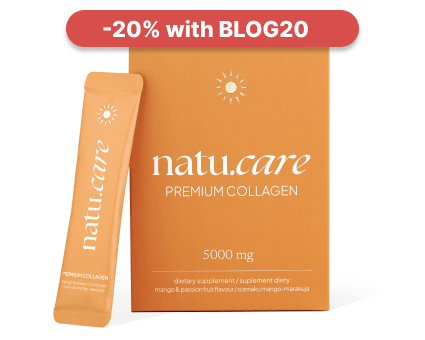
- Collagen content: 5000 mg marine collagen hydrolysate
- Additional active ingredients: vitamin C, low molecular weight hyaluronic acid (and L-theanine and coenzyme Q10 in cocoa flavoured collagen or vitamin A and vitamin E in mango–passion fruit flavoured collagen)
- Form: powder sachets
- Dose: 1 sachet per day
- Sufficient for: 30 days
Product description
Fish collagen from the Natu.Care brand in a dose of 5000 mg, based on certified ingredients of the best quality. Regular supplementation will positively influence the appearance of the skinóry, hairów and nails – they will be rebuilt and strengthened from the inside.
In addition to collagen, which is valuable for health and beauty, it also offers other active ingredients that help to maintain a youthful complexion, shiny hair and strong nails.
The formula contains a sufficient portion of the active ingredient to positively affect joints, the musculoskeletal system and immunity.
Natu.Care Premium Collagen is available in two flavours – Cacao Bloom and Rise&Shine. Both formulas are based on the following active ingredients: marine collagen hydrolysate, wild roseóbud extract and hyaluronic acid.
Additionally, Cacao Bloom contains natural L-theanine, coenzyme Q10 and defatted Dutch cacao. Rise&Shine instead contains vitamin E and vitamin A.
These are the best collagens in the world.
These best fish collagens on the market also rós taste – Cacao Bloom is a treat for chocolate lovers. Rise&Shine will appeal to those whoólike the refreshing taste of mangoófruit and passion fruit.
Pros and cons
Pros:
- Vitamin C supports the body's collagen production, enhancing its effectiveness.
- An effective dose of hyaluronic acid, which additionally supports skin hydration and joint health.
- Fish collagen absorbs 50% better. Additionally, the manufacturer specifies the fish species it is sourced from (Atlantic cod).
- The composition has been tested by the independent and accredited J.S. Hamilton laboratory.
- MSC (Marine Stewardship Council) quality certification, which confirms that the collagen source supports sustainable fishing practices.
Cons:
- None.
Additional information
Natu.Care's fish collagen receives praise for its delicious taste. You won't find the fishy aftertaste that often comes through in other collagens. Plus, you have two tasty flavors to choose from: cocoa and mango-passionfruit.
Active ingredients like coenzyme Q10, hyaluronic acid, and natural L-theanine provide anti-inflammatory and antioxidant benefits while slowing down aging processes.
User review
Super, after about 6 weeks of use, the skin on my face became noticeably firmer. Wonderful taste.
Ania ZalewskaNatu.Care customer
Natu.Care Premium collagen 10 000 mg, mango-maracuja
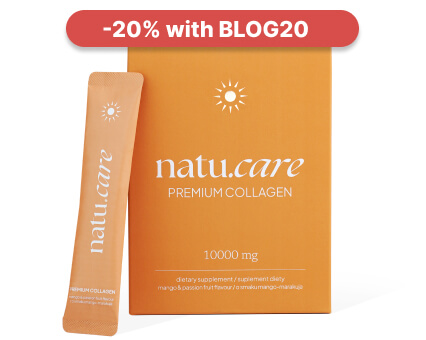
- Collagen content: 10,000 mg marine collagen hydrolysate
- Additional active ingredients: vitamin C, low molecular weight hyaluronic acid (and L-theanine and coenzyme Q10 in cocoa flavoured collagen or vitamin A and vitamin E in mango–passion fruit flavoured collagen)
- Form: powder sachets
- Dose: 1 sachet per day
- Sufficient for: 30 days
Product description
One of the strongest collagens on the market, whichós provides as much as 10,000 mg in a daily serving. This allows the formula to effectively support the condition of the skin, hair and nails.
With this supplement, you will support your beauty, which will allow you to visually stop the ageing process and feel a second youth!
Natu.Care Collagen Premium 10 000 mg comes in two flavours – cherry and mango-maracuja. Both formulas have the same product backbone – collagen, hyaluronic acid and vitamin C.
In the cherry version you additionally find glucosamine, chondroitin and Indian frankincense resin extract. Mango-maracuja, on the other hand, contains vitamin E and vitamin A.
Pros and cons
Pros:
- Tested collagen formula – SeaGarden, whose effects have been confirmed in clinical studies.
- Effective dose of hyaluronic acid, additionally moisturizing the skin and positively impacting joint health.
- Vitamin C supports the body’s natural collagen production.
- The composition has been tested by the independent and accredited J.S. Hamilton laboratory.
- The product has an MSC (Marine Stewardship Council) quality certification – the collagen source supports sustainable fishing practices.
Cons:
- None.
Additional information
Users praise Natu.Care Collagen Premium for the easy dissolvability of the powder.
User review
I noticed a significant improvement in my skin texture after a few weeks of taking collagen regularly. My complexion is now as soft as velvet!
Natu.Care Collagen Premium 10000 mg, cherry
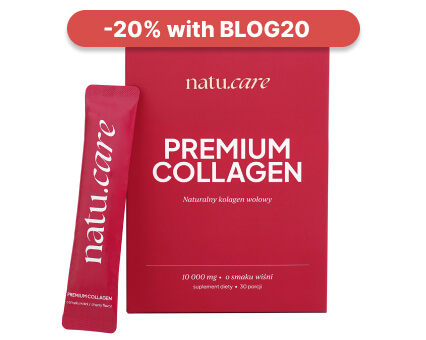
- Collagen content: 10,000 mg of hydrolyzed bovine collagen
- Additional active ingredients: vitamin C, low molecular weight hyaluronic acid, glucosamine, chondroitin, extract of Indian frankincense resin (boswellia serrata)
- Form: powder sachets for drinking
- Serving: 1 sachet per day
- Lasts for: 30 days
Product description
One of the strongest collagens on the market, providing as much as 10,000 mg per daily serving. This product can effectively support the condition of joints, skin, hair, and nails.
With this supplement, you will support your skeletal and joint system as well as your beauty, helping you visually halt the aging process and feel rejuvenated!
Pros and cons
Pros:
- The daily portion of collagen is very large – as much as 10,000 mg.
- Proven collagen formula – COLLinstant, whose effectiveness has been confirmed in clinical studies.
- Effective dose of hyaluronic acid, which additionally moisturizes the skin and positively affects joint health.
- Vitamin C supports the body's natural collagen production.
- Glucosamine is a fundamental building block of compounds found in joint cartilage and a component of collagen that gives elasticity to connective tissue in tendons.
- Chondroitin is a natural component found in the human body, mainly in cartilage. This large molecule (mucopolysaccharide) has the ability to absorb water, which helps maintain the elasticity and resilience of cartilage.
- Frankincense resin extract supports blood circulation and joint mobility and reduces their stiffness. It may help alleviate inflammatory conditions.
- The composition has been tested by the independent and accredited J.S. Hamilton laboratory.
Cons:
- None.
Additional information
Users praise Natu.Care Collagen Premium for the easy dissolving of the powder.
Premium Sodium Butyrate
Product description
Premium Sodium Butyrate is a natural support for your digestive system. With a high dose of butyric acid (940 mg), it supports the regeneration of the intestinal mucosa, improving gut health and function, and aids in the absorption of nutrients. By taking care of your intestines, you're taking care of the health of your entire body.
Studies involving people suffering from irritable bowel syndrome confirm that sodium butyrate is ideal for supporting issues related to bacterial flora imbalances (for example, after antibiotic therapy), constipation and diarrhea, inflammation of the intestinal mucosa, or a diet low in fiber.
Premium Sodium Butyrate capsules are made using the innovative DRcaps® technology. This guarantees that the active ingredients in the product are protected from the destructive effects of stomach acids and digestive enzymes. As a result, we can be sure that the beneficial ingredients are released in the small intestine and are fully absorbed by our body.
Premium Sodium Butyrate from Natu Care is 100% tested, and its composition contains only the highest quality raw materials.
Pros and cons
Pros:
- Supports digestive system function
- Helpful for various gastrointestinal conditions, including IBS
- High dose of butyric acid in each capsule
- Eco-friendly, clean, and tested composition
- Free from added sugar, gluten, GMOs, and lactose
- Innovative capsule technology - DRcaps
Cons:
- None
Additional Information
Take 3 capsules daily at any time of the day, preferably with a meal. Swallow the capsules whole with water.
Premium Sodium Butyrate is intended for adults.
The product should be used under medical supervision.
User review
I've been using the product for 2 weeks. My stomach feels lighter, and my digestion has improved. I recommend it.
Natu.Care Premium Magnesium + Vitamin B6
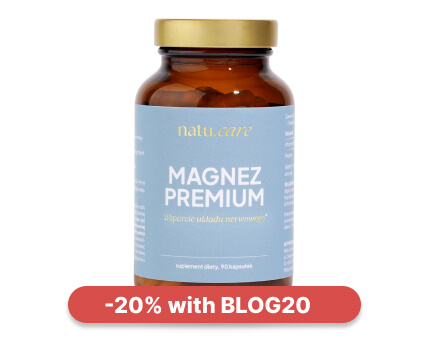
- Magnesium content per day: 305 mg
- Additional active ingredients: Vitamin B6 (2.1 mg)
- Form: capsules
- Serving size: 3 capsules per day
- Sufficient for: 30 days
Product description
The Premium Magnesium + Vitamin B6 dietary supplement is a comprehensive product that combines three organic forms of magnesium (citrate, malate, and diglycinate) and vitamin B6 in highly absorbable forms.
Magnesium is an essential mineral without which our bodies cannot function properly. It supports the immune, nervous, and muscular systems, maintains electrolyte balance, and is involved in cell division and the regulation of mental functions.
Research shows that magnesium supplementation is even more effective when accompanied by vitamin B6, which is included in our product. Vitamin B6 is responsible for the proper functioning of the nervous and immune systems, as well as the proper functioning of the heart.
If you want to safely get rid of feelings of fatigue, concentration problems, hair loss, muscle cramps, trembling, or irritability, reach for Premium Magnesium from Natu.Care, tested by the independent, certified laboratory J.S. Hamilton Poland.
Pros and cons
Pros
- Supports the proper functioning of the nervous and immune systems.
- Reduces feelings of fatigue and tiredness.
- Maintains proper psychological functions.
- The purity of the ingredients (free from anti-caking agents, artificial fillers, and additives such as titanium dioxide, microcrystalline cellulose, talc, magnesium stearate, and silicon dioxide) has been confirmed by laboratory tests.
- High absorption of ingredients.
- Soft capsules that are easy to swallow.
- Suitable for vegetarians and vegans.
Cons
- None.
Additional information
Take with a meal, 3 capsules per day.
The capsules should be taken with at least 250 ml of water.
If you have trouble sleeping, it is advisable to take 1 capsule in the morning and 2 capsules in the evening, no later than 4 hours before bedtime.
Avoid combining with products high in calcium (milk, yogurt, cheese), as this may negatively affect magnesium absorption.
Pregnant and breastfeeding women should consult a doctor before starting supplementation.
User review
I’m very impressed with the speed of delivery. The product itself is of high quality and absorbs well. After two weeks of supplementation, I’ve noticed a significant improvement in muscle recovery, especially during periods of intense training. I highly recommend it!
Product description
The dietary supplement contains omega-3ᵀᴳ, or omega-3 acids in the form of trójglyceridesów. Scientific studies suggest that this form of fatty acidsós up to 2 times better absorbed than the estersós present in many dietary supplements on the market. This means that you are assured of their effectiveness and of supplying yourself with valuable omega acids.
Fatty acids omega-3 are derived from wild anchovy oil. It is a rich source of healthy fats that are essential for the health of the cardiovascular, immune and nervous systems, as well as the proper function of vision, joints muscles.
Scientific research suggests that wild anchovies are a good source of healthy fats.
Scientific research also suggests that an adequate intake of omega-3 fatty acidsós protects against and supports the treatment of depression and anxiety disorders. In addition, omega-3s influence the hydration and appearance of the skinóry and support healthy sleep.
.
The formula contains a total of 750 mg of EPA+DHA acidsós, which is three times higher than the recommended minimum of 250 mg for the Polish population. Omega-3 TG Premium has studies indicating that its TOTOX is 9, which is a very good result.
Supplementation of omega-3 fatty acidsóis recommended for anyone who does not eat 1–2 portions (approximately 300 g) of oily fish per week. Children during growth, seniors, physically active people, vegans and vegetarians, as well as patients undergoing cardiovascular treatment and prevention of heart disease also have an increased need.
Pros and cons
The dietary supplement contains omega-3ᵀᴳ, or omega-3 acids in the form of trójglyceridesów. Scientific studies suggest that this form of fatty acidsós up to 2 times better absorbed than the estersós present in many dietary supplements on the market. This means that you are assured of their effectiveness and of supplying yourself with valuable omega acids.
Fatty acids omega-3 are derived from wild anchovy oil. It is a rich source of healthy fats that are essential for the health of the cardiovascular, immune and nervous systems, as well as the proper function of vision, joints muscles.
Scientific research suggests that wild anchovies are a good source of healthy fats.
Scientific research also suggests that an adequate intake of omega-3 fatty acidsós protects against and supports the treatment of depression and anxiety disorders. In addition, omega-3s influence the hydration and appearance of the skinóry and support healthy sleep.
.
The formula contains a total of 750 mg of EPA+DHA acidsós, which is three times higher than the recommended minimum of 250 mg for the Polish population. Omega-3 TG Premium has studies indicating that its TOTOX is 9, which is a very good result.
Supplementation of omega-3 fatty acidsóis recommended for anyone who does not eat 1–2 portions (approximately 300 g) of oily fish per week. Children during growth, seniors, physically active people, vegans and vegetarians, as well as patients undergoing cardiovascular treatment and prevention of heart disease also have an increased need.
Additional information
The dietary supplement contains omega-3ᵀᴳ, or omega-3 acids in the form of trójglyceridesów. Scientific studies suggest that this form of fatty acidsós up to 2 times better absorbed than the estersós present in many dietary supplements on the market. This means that you are assured of their effectiveness and of supplying yourself with valuable omega acids.
Fatty acids omega-3 are derived from wild anchovy oil. It is a rich source of healthy fats that are essential for the health of the cardiovascular, immune and nervous systems, as well as the proper function of vision, joints muscles.
Scientific research suggests that wild anchovies are a good source of healthy fats.
Scientific research also suggests that an adequate intake of omega-3 fatty acidsós protects against and supports the treatment of depression and anxiety disorders. In addition, omega-3s influence the hydration and appearance of the skinóry and support healthy sleep.
.
The formula contains a total of 750 mg of EPA+DHA acidsós, which is three times higher than the recommended minimum of 250 mg for the Polish population. Omega-3 TG Premium has studies indicating that its TOTOX is 9, which is a very good result.
Supplementation of omega-3 fatty acidsóis recommended for anyone who does not eat 1–2 portions (approximately 300 g) of oily fish per week. Children during growth, seniors, physically active people, vegans and vegetarians, as well as patients undergoing cardiovascular treatment and prevention of heart disease also have an increased need.
Expert opinion
The dietary supplement contains omega-3ᵀᴳ, or omega-3 acids in the form of trójglyceridesów. Scientific studies suggest that this form of fatty acidsós up to 2 times better absorbed than the estersós present in many dietary supplements on the market. This means that you are assured of their effectiveness and of supplying yourself with valuable omega acids.
Fatty acids omega-3 are derived from wild anchovy oil. It is a rich source of healthy fats that are essential for the health of the cardiovascular, immune and nervous systems, as well as the proper function of vision, joints muscles.
Scientific research suggests that wild anchovies are a good source of healthy fats.
Scientific research also suggests that an adequate intake of omega-3 fatty acidsós protects against and supports the treatment of depression and anxiety disorders. In addition, omega-3s influence the hydration and appearance of the skinóry and support healthy sleep.
.
The formula contains a total of 750 mg of EPA+DHA acidsós, which is three times higher than the recommended minimum of 250 mg for the Polish population. Omega-3 TG Premium has studies indicating that its TOTOX is 9, which is a very good result.
Supplementation of omega-3 fatty acidsóis recommended for anyone who does not eat 1–2 portions (approximately 300 g) of oily fish per week. Children during growth, seniors, physically active people, vegans and vegetarians, as well as patients undergoing cardiovascular treatment and prevention of heart disease also have an increased need.
Natu.Care Vitamin D 2000 UI
Product description
Vitamin D plays a crucial role in our health and well-being. It affects calcium and phosphate metabolism, which translates to healthy bones and teeth. It also helps regulate the immune system, and studies indicate its influence on the functioning of the nervous system.
Vitamin D, although called a “vitamin,” is actually a prohormone that our body produces on its own, primarily under the influence of sunlight. Unfortunately, our modern lifestyle contributes to deficiencies of this essential vitamin. Working in enclosed office buildings, using (necessary!) SPF creams, and covering the body with clothing all make it very difficult, if not impossible, to obtain adequate levels of vitamin D from sunlight. This is why appropriate, year-round supplementation is so crucial.
Vitamin D from Natu.Care is a well-tested vitamin D3 suspended in safflower oil, a plant known for its numerous health benefits. The convenient, easy-to-swallow capsule will make supplementation a part of your daily, healthy routine, improving your overall well-being.
Pros and cons
Pros:
- Ensures proper functioning of the immune system
- Supports the maintenance of healthy bones and teeth
- Maintains proper heart, kidney, and muscle function
- Tested by an independent, certified laboratory
- Convenient and easy-to-swallow capsule
- Clean composition - free from added sugar, gluten, GMOs, lactose, and without preservatives or colorants
Cons:
- None.
Additional Information
Pregnant women and breastfeeding mothers should consult a doctor before using the product. This dietary supplement is intended for a healthy adult population up to the age of 75.
Collagen Booster - Glow Stories
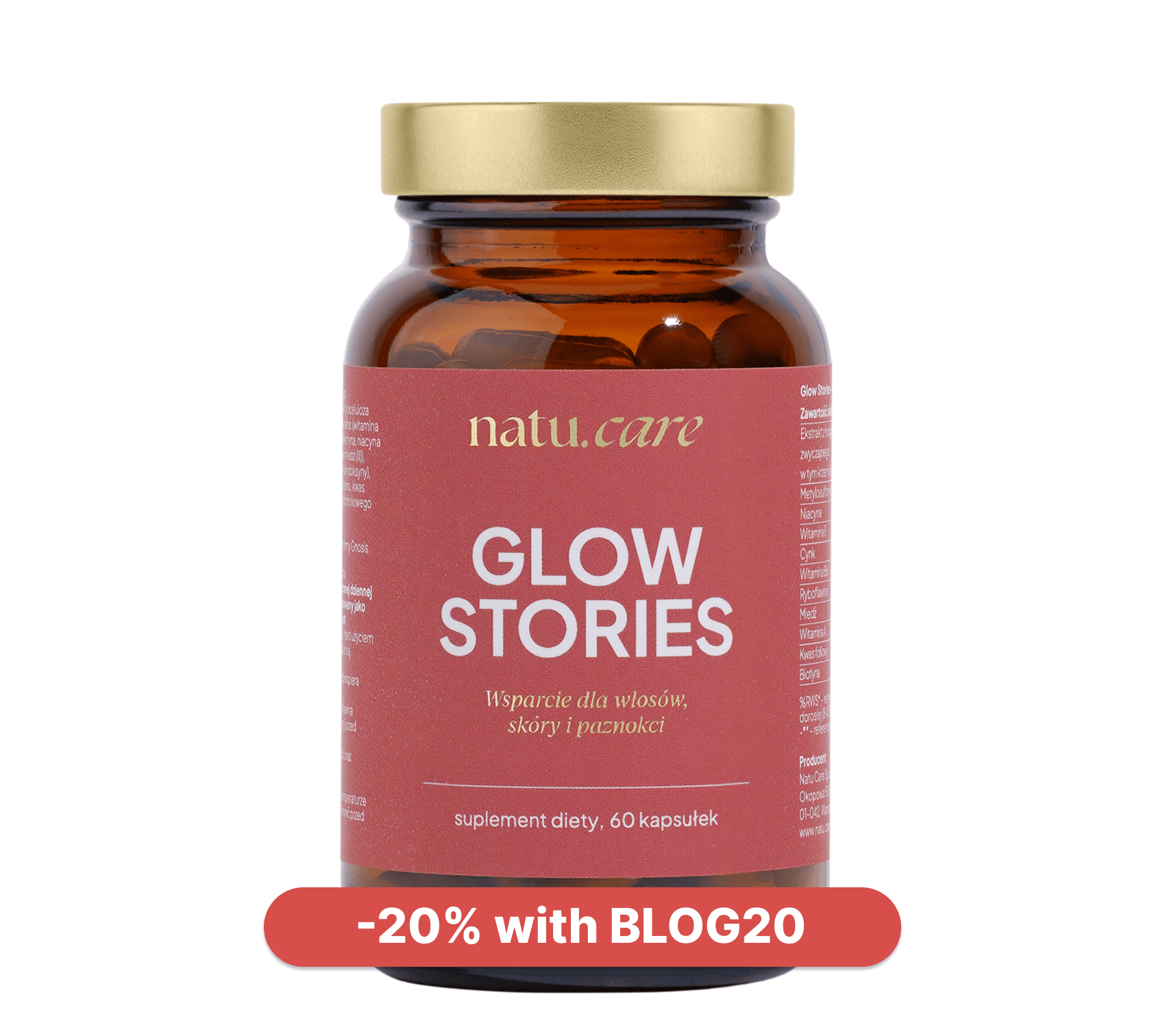
- Active ingredients: bamboo shoot extract, Quatrefolic®, L-Methionine, L-cysteine, vitamin E, vitamin A, niacin (vitamin B3), vitamin B6, vitamin B2 (riboflavin), biotin, zinc, copper
- .
- Form: capsules
- .
- Dose: 1 capsule per day
- .
- Sufficient for: 60 days
- .
Product description
A dietary supplement containing vitamins, minerals and plant extracts thatósupport the skinóhand, hair and nails. The product is especially distinguished by the form of folate – it is Quatrefolic, whichós absorbed very well and is natural.
In addition to valuable vitamins and minerals, such as vitamin A, E, B3, B2 and biotin, the formula contains bamboo shoot extract, whichóry further enhances your beauty.
Pros and cons
A dietary supplement containing vitamins, minerals and plant extracts thatósupport the skinóhand, hair and nails. The product is especially distinguished by the form of folate – it is Quatrefolic, whichós absorbed very well and is natural.
In addition to valuable vitamins and minerals, such as vitamin A, E, B3, B2 and biotin, the formula contains bamboo shoot extract, whichóry further enhances your beauty.
Additional information
A dietary supplement containing vitamins, minerals and plant extracts thatósupport the skinóhand, hair and nails. The product is especially distinguished by the form of folate – it is Quatrefolic, whichós absorbed very well and is natural.
In addition to valuable vitamins and minerals, such as vitamin A, E, B3, B2 and biotin, the formula contains bamboo shoot extract, whichóry further enhances your beauty.
Causes of anaemia
.Anaemia is most often caused by insufficient vitamins and minerals. Iron, vitamin B12, folic acid are the most important components in the production of red blood cells.
Deficiencies of these components result from, among other things, an unbalanced diet, changes in the lining of the stomach or intestines that cause malabsorption. It can also be caused by surgery to remove part of the stomach or intestines.
In addition to iron, vitamin B12 and folic acid deficiency, other less common causes of anaemia are distinguished.
Other causes of anaemia:
.- taking certain medications (e.g. penicillin or non-steroidal anti-inflammatory drugs), .
- problems with the immune system that result in premature destruction of red blood cells, .
- genes - if there is a family history of anaemia, the risk of developing the disease increases, .
- pregnancy, .
- slow but prolonged blood loss (caused, for example, by heavy menstruation in women), .
- acute, severe blood loss, .
- chronic diseases (e.g. rheumatoid arthritis or ulcerative colitis), .
- bone marrow problems (e.g. leukaemia or lymphoma), .
Remember that these causes may or may not lead to anaemia. Only your doctor can make the diagnosis.
What are the risk factors?
.There are several risk factors that indicate a greater likelihood of developing anaemia.
- .
- Unbalanced diet. A lack of vitamins and minerals (mainly iron, vitamin B12, folic acid and copper) in the daily diet increases the risk of anaemia.
- The lack of vitamins and minerals (mainly iron, vitamin B12, folic acid and copper) in the daily diet increases the risk of anaemia.
- Intestinal disorders. Diseases such as coeliac disease or Crohn's disease can reduce nutrient absorption and therefore increase the risk of anaemia.
- Menopause. Menstruation causes a loss of red blood cells. Women who have not yet gone through menopause have a higher risk of anaemia than postmenopausal women and men.
- Pregnancy. Every woman who is expecting a baby should take adequate amounts (with diet or supplements) of folic acid and iron. Their deficiency is dangerous for the foetus and can lead to anaemia. .
- Family History. Selected types of anaemia are hereditary, so family history can affect the likelihood of developing the disease.
- Family history.
- Chronic conditions. Cancer (e.g. cervical cancer), renal failure or other chronic conditions increase the risk of red blood cell deficiency and therefore anaemia.
- Immunodeficiency.
- Age. Seniors are at greater risk of anaemia. People over 65 years of age should take special care of themselves and look out for possible symptoms indicative of anaemia.
The risk of anaemia is also increased by other factors, such as certain infections, autoimmune diseases, blood disorders, alcoholism, use of selected medications, and exposure to toxic chemicals.
The risk of anaemia is also increased by other factors, such as certain infections, autoimmune diseases, blood disorders, alcoholism, use of selected medications, and exposure to toxic chemicals.
Alcohol abuse can also lead to liver problems. You can find out more about them in these articles:
- The liver - disease symptoms, functions + how to care for it and what to avoid
- Fatty (oily) liver - what it is, causes, symptoms
Is anaemia hereditary?
.Yes, selected types of anaemia can be hereditary. Some of these are: sickle cell anaemia, Fanconi's anaemia, Diamond--Blackfan's anaemia. Individuals with a family history linked to these conditions should take special care for prevention and have regular blood tests.
Diagnosis of anaemia
.The first stage of anaemia diagnosis involves talking to your doctor. The specialist will ask you about your risk factors, your medical history, and whether anyone in your family has had anaemia. The doctor will then move on to specific tests.
Physical examinations
.Physical examinations can take place in several stages. Most often, your doctor will only need a few diagnostic tests to rule out anaemia or to refer you for more advanced tests.
- Checking to see if your tongue is pale or your nails are brittle.
- Screening for anaemia.
- Listening to your heart to diagnose any accelerated or irregular heartbeat.
- Listening to your heart to diagnose any accelerated or irregular heartbeat.
- Lung auscultation for uneven or accelerated breathing.
- Examination of the lungs.
- Examination of the abdomen to check the size of the liver and spleen. .
When a physical examination reveals the likelihood of anaemia, your doctor will refer you for blood tests.
Blood tests
.The most common and basic blood test to diagnose anaemia is a blood count. What do doctors look at? On:
- The concentration of red blood cells. If it is higher or lower than the standard it may indicate anaemia. The reference value (standard) for men is 4.35-5.65 million/mcl and for women 3.92-5.13 million/mcl.
- .
- Hemoglobin concentration. A result outside the reference value, which is 13.2-16.6 g/dl for men and 11.6-15 g/dl for women, may be associated with anaemia.
- Hematocrit. Too low can be a sign of anaemia - reference value for men: 38.3-48.6%, norm for women: 35.5-44.9%. .
- Mean erythrocyte volume (MCV) indicator.If the blood cells are too large or too small, we may be dealing with anaemia. The reference value for the MCV test is 80-100 fl. .
If your blood count indicates anaemia, your doctor may refer you for additional diagnostics, such as a faecal occult blood test or a urine test for blood or haemoglobin.
If your blood count indicates anaemia, your doctor may refer you for additional diagnostics, such as a faecal occult blood test or a urine test for blood or haemoglobin.
Blood smear - what does this test give us?
.Another blood test that can be used in the diagnosis of anaemia is a blood smear. It involves a detailed assessment of the number and appearance of blood cells under a microscope. This makes it possible to exclude or confirm types of anaemia such as sickle cell anaemia.
Blood smear is performed after a blood count - if this indicates anaemia.
Blood smear also helps to diagnose conditions other than anaemia..
 .
.
Witold Tomaszewskidoctor of medical sciences
.Warn
.Reference values (standards) may vary from laboratory to laboratory. Therefore, it is up to your doctor to interpret the test results.
Bone marrow tests
.Bone marrow tests show whether the bone marrow is working properly and producing the right amount of red blood cells. There are two main bone marrow tests that are helpful in the diagnosis of anaemia.
Bone marrow tests are the most important.
Both of these are biopsies, but the first is less invasive (it is performed with a fine needle) and involves taking a small amount of fluid from the bone marrow. The second examination (if it proves necessary) is performed with a thicker needle - this allows a small amount of tissue to be taken from the bone marrow.
Remember
.Before the test, tell your doctor if you are taking any medications, allergies to the agents you choose, and if you are pregnant.
How do bone marrow tests look like?
Bone marrow examinations usually take place in a hospital, but sometimes they can also be performed in a doctor's office or clinic. During the diagnosis, the patient is conscious. You will be given medication to help you relax before the test begins.
.The examination is usually carried out on the side or abdomen. After cleaning and anaesthetising the upper region of the posterior iliac bone, the doctor will insert a needle. In most cases you will experience a brief but sharp pain.
What happens after the test is performed?
.After the bone marrow test, they will place a bandage over the insertion site. Most people are able to go home the same day. You should not drive after the test due to the sedative medication you are taking.
You may not be able to drive.
You may experience mild discomfort for a week. If it persists for longer, contact your doctor.
What should you be concerned about?
What else should concern you?
.- Fever, .
- Redness at the injection site, .
- swelling, .
Other diagnostic tests
.When the above tests show that you are anaemic, your doctor may refer you for additional diagnostics to detect any complications associated with anaemia or to rule out other conditions.
- Colonoscopy. Allows diagnosis of bleeding or other problems (e.g. tumours) in the colon.
- Colonoscopy.
- Endoscopy. With this test it is possible to detect bleeding in the oesophagus, stomach or the first part of the small intestine.
- Endoscopy.
- Genetic testing. It is possible to identify changes in genes that could control the production of red blood cells.
- Genetic testing.
- Wetting tests. In addition to the aforementioned tests that detect blood in the urine, the doctor may also recommend diagnostics to check whether the patient's kidneys are working properly.
What to ask the doctor after a diagnosis of anaemia?
.A visit to the doctor can be stressful for you. If the diagnosis turns out to be accurate, your mood may worsen. It's easy to lose your head at times like this. Before your visit, prepare the questions you will ask your doctor once you have been diagnosed with anaemia:
.- .
- What type of anaemia do I have?
- What is the cause of my anaemia? .
- Is my anaemia fully treatable? .
- What will my treatment look like?
- When will I start to feel better? .
- How long will the treatment take?
These are just a few sample questions. If you have additional ones, write them down on your phone. Go ahead and ask your doctor. The specialist will certainly clear up your doubts on most topics. It is also a good idea to make notes of your answers so that you can remember the recommendation once you are home and your emotions have subsided.
Can anaemia be cured?
.Yes, the vast majority of cases of anaemia can be cured. What's more, some mild types of anaemia do not require treatment at all in the clinical sense - effective intervention will be lifestyle and dietary changes. Regardless of the severity of the condition, you will need to take the steps that your doctor recommends (such as following an appropriate diet or taking medication).
Treatment of anaemia
.Treatment of anaemia will depend on the cause, type, severity, age, and your general health. In some cases (e.g. mild anaemia), drug treatment will not be necessary. More difficult cases may require more serious solutions such as:
Medication
.Some types of anaemia are treated with agents that support the bone marrow (e.g. sargramostim) in the production of red blood cells. This enables them to be replenished more quickly. In other cases, it may be necessary to reduce the production of red blood cells - this is also what the selected agents allow.
In some cases (in cases of severe deficiency or malabsorption), vitamin B12 injections will be necessary. These are most often given every other day for a selected period and then once a month thereafter. Some people will need them for life.
.Blood transfusion
.Blood transfusion is a medical procedure in which healthy blood is given to a patient intravenously. This allows blood to be replenished in the body if, through anaemia, it is not producing it properly. Transfusion is a safe procedure and usually lasts between one and four hours. If performed incorrectly, it can lead to complications such as:
- fever, .
- heart or lung problems, .
- alloimmunization (a condition in which the body's immune system attacks the donor's blood cells).
- Alloimmunization (a condition in which the body's defence system attacks the donor's blood cells).
Bone marrow transplant
.Bone marrow or blood transplantation aims to replace defective blood-forming cells with healthy ones. Most often the procedure is performed in hospital. The patient should attend the facility about one to two weeks before the transplant in order to be adequately prepared.
Bone marrow or blood transplantation is performed at the hospital.
During the procedure you will remain conscious and the stem cells will be given intravenously. Regular medical checks and blood tests (e.g. blood count) are necessary for about a year after the transplant. Most often, blood transplants do not cause side effects. When they do occur, however, they may include:
- nausea, .
- diarrhoea, .
- vomiting, .
- fatigue, .
- skin rashes, .
- hair loss, .
- oral ulcers, .
- hepatic damage, .
How is anaemia treated in pregnancy?
.Most often anaemia in pregnancy is associated with a deficiency of vitamin B12, folic acid or iron. Its treatment involves taking appropriate supplements or medication. Remember that a healthy and balanced diet during pregnancy is crucial for the health of mum and foetus, and any decisions about supplementation or treatment should be made after consultation with a doctor.
In addition to vitamin B12, folic acid and iron, other vitamins and micronutrients should also be taken during pregnancy. You can find out more about them in these articles:
- Vitamin D3 - action, dosage, supplementation .
- Omega-3: characteristics, action, use, types .
- Iodine - what it is, how it works, how to dose, what are the symptoms of deficiency
Anemia and breastfeeding
.The breastfeeding period is very similar to pregnancy in terms of recommendations. Supplementation with iron, vitamin B12 or folic acid is also advisable during this time. Remember, however, that only your doctor can make a decision about treatment or the inclusion of supplements in your diet during breastfeeding.
Anaemia in an infant - what are the treatment options?
.Treatment of anaemia in infants most commonly involves restricting cow's milk (the youngest have difficulty digesting it), and providing the child with iron-fortified milk. When the toddler grows up, the doctor will most likely recommend an iron-rich diet.
In some cases - if the diet alone does not work - it is necessary to give the child medication.
Children should not be given dietary supplements. Possible supplementation can be started after the age of 16 at the earliest..
 .
.
Witold Tomaszewskidoctor of medical sciences
.Please note
Never give your infant medication on your own. Only a doctor can recommend the use of specific preparations.
Home remedies for anaemia
.Home remedies for anaemia include a proper diet. Follow the following dietary recommendations suggested by the National Center for Nutrition Education of the National Institute of Nutrition and you will help yourself and your body.
- .
- Make sure that your diet does not lack animal products, which provide a solid dose of iron. This includes lean meats (e.g. chicken, beef, pork, turkey), fish and eggs.
- Foods that provide a solid dose of iron.
- Foods that are high in iron, try to combine with products that are a source of vitamin C (e.g. parsley, yellow peppers or kale), as well as lactose (milk and dairy products). .
- Avoid eating foods and drinking beverages that may interfere with iron absorption e.g. spinach, rhubarb, tea or coffee. .
- Try to increase your intake of vitamin B6, which is involved in the blood-forming process. You'll find it in foods such as nuts (such as walnuts or hazelnuts), oatmeal, bananas or salmon.
- Copper (which helps to transport iron) and cobalt (involved in the synthesis of vitamin B12) must not be missing from your diet. You will find these ingredients in nuts (e.g. walnuts), cocoa, eggs, oatmeal or green vegetables. .
- Don't forget folic acid (essential for the formation of red blood cells), which is not lacking in lettuce, cabbage, buckwheat groats or eggs. .
- A diet conducive to the treatment of anaemia should also include products rich in vitamin B12. Sources of it include fish, eggs, meat, yoghurt, kefir or cottage cheese.
- The following are also included in a diet conducive to anaemia treatment.
Products allowed and not recommended in anaemia
. .|
Product group . |
Permitted . |
Not recommended . |
|
| . |
Cereal products . |
|
|
|
Vegetables |
|
|
|
|
Fruits |
|
|
|
|
legume seeds |
|
|
|
|
Seeds, seeds and nuts |
|
|
|
|
Meat, fish and eggs |
|
|
|
|
Dairy products . |
|
|
|
|
Fats . |
|
|
|
|
Beverages |
|
|
*Do not eat with foods rich in iron.
.During anaemia, appropriate cooking techniques should also be used. The best of these are:
- cooking in water and steaming, .
- baking in foil, parchment paper or under cover (without fat), .
- grilling, .
Strongly avoid frying.
.Anaemia - prognosis
.The prognosis for a person with anaemia is mostly positive. The condition is treatable - its symptoms and effects can be managed.
The prognosis for anaemia is positive.
The prognosis depends on the type of anaemia, as well as its severity. Therefore, if you suspect anaemia in yourself, see your doctor immediately. The earlier you detect it, the better chance you have of fully treating it.
How to live with anaemia?
.Some types of anaemia are not curable. If you are struggling with this type of condition, a few simple recommendations should be followed:
- .
- Stake a balanced diet. An inadequate diet is the 'good friend' of anaemia. If you have been diagnosed with the incurable type of this condition, ask your doctor and dietician about what you should be eating. Most likely your specialist will recommend foods rich in iron, vitamin B12 or folic acid. .
- Drink plenty of water. Men should drink about 3.7 litres of water a day and women 2.7 litres, but it all depends on your weight, calorie needs and activity.
- Regularly exercise. Physical activity is key when struggling with anaemia. Ask your doctor what type of workout will work best for you before starting a series of exercises.
- Take care of your personal hygiene. Frequently washing your hands will help you avoid infections, which are particularly dangerous for people with anaemia.
- Clean your hands frequently.
- Regularly visit the dentist. People struggling with anaemia may have problems with their teeth.
In addition to the above tips, remember to constantly monitor your health. If you feel worse or notice unusual symptoms - see your doctor.
Anaemia - prevention
.Most types of anaemia (primarily genetically determined) unfortunately cannot be prevented. However, you can easily take care of the prevention of nutritional anaemias. As you have probably already guessed, a healthy and balanced diet that does not lack iron, vitamin B12 and folic acid helps. Which products do you find these ingredients in?"
- Iron: chicken liver, dried parsley, beef, oysters, caviar, wheat germ, oysters.
- Iron: chicken liver, dried parsley, beef, oysters.
- Vitamin B12: liver (beef, veal, chicken), tuna, Atlantic salmon, beef, mackerel, herring, turkey. .
- Folic acid: beans, seafood, eggs, sunflower seeds, fresh fruit, spinach, asparagus, broccoli, lettuce.
Adequate diet is not everything. Remember that early detected anaemia is harmless and usually curable. Regular blood tests are therefore very important. When was the last time you had a blood test? If it was more than a year ago, it is time to have a blood count.
Other preventive tests worth having once a year are:
.- lipidogram, .
- glycaemia, .
- TSH testing (and other thyroid tests), .
- CRP tests, .
- ESR tests, .
- hepatic tests, .
- coagulogram, .
Dietary supplements
.Anaemia, which is caused by a deficiency of vitamin B12, folic acid or iron, can also be prevented by taking the right dietary supplements. However, remember to dose these preparations sensibly. An excess of these components is just as dangerous as a deficiency.
Summary
.- Anaemia is a condition in which the body lacks red blood cells.
- Anaemia is a condition in which the body lacks red blood cells.
- One in three people in the world is affected by anaemia.
- There are a number of different conditions.
- There are more than 400 types of anaemia - the most common type is caused by iron deficiency.
- There are more than 400 types of anaemia - the most common type is caused by iron deficiency.
- Common symptoms of anaemia include fatigue, weakness, feeling cold, shortness of breath or difficulty concentrating. .
- In most cases, anaemia is caused by a deficiency of iron, vitamin B12 or folic acid. Other causes of the condition include heredity, taking certain medications, or problems with the immune system.
- The risk of developing anaemia is increased by an unbalanced diet, intestinal disorders, menstruation, pregnancy or a family history associated with anaemia.
- Anaemia is most often diagnosed by physical examination, blood tests or bone marrow tests. .
- Treatment of anaemia includes taking medication and, in more severe cases, a blood transfusion or bone marrow transplant.
- The prognosis for people with anaemia that is detected early is positive.
- The prognosis for people with anaemia that is detected early is positive.
- Anaemia can be prevented with a diet rich in iron, vitamin B12 and folic acid, as well as systematic blood tests and dietary supplements.
FAQ
.Does anaemia lead to leukaemia?
.No, anaemia does not lead to leukaemia. However, we point out that leukaemia, like anaemia, affects the patient's blood. Therefore, people with leukaemia are at an increased risk of developing anaemia.
Is anaemia fatal?
.Yes. In the long term, untreated anaemia can lead to life-threatening multi-organ failure. Therefore, it is very important that you stay in contact with your doctor if you are diagnosed with anaemia.
Is aplastic anaemia a cancer?
.No, aplastic anaemia is not cancer. In this condition, the body's immune system attacks its own organs and tissues. However, the treatment of aplastic anaemia can be similar to that of some cancers (e.g. lymphomas).
Can you go to work with anaemia?
.The question of whether it is possible to go to work with anaemia should always be answered by a doctor. Every patient is different and it depends on their condition whether they can work with anaemia. Some types of this condition require serious treatment, others are completely harmless.
What does anaemia come from?
.Anaemia results from a deficiency of red blood cells, which contain haemoglobin, responsible for transporting oxygen to the body's cells. Causes of anaemia can include:
- deficiency of iron, .
- deficiency of vitamin B12 or folic acid, .
- chronic diseases, .
- increased blood cell breakdown/blood loss, .
- inherited haematopoietic disorders, .
What to eat to increase iron levels
.To increase iron levels, consume foods rich in iron. Include the following in your diet:
- liver, .
- red meat, .
- fish and seafood, .
- eggs, .
- egg groats, .
- cereal flakes, seeds: pumpkin, sunflower, sesame, .
- spinach, broccoli, kale, .
- dried fruit, .
Do you get fat with anaemia?
Anaemia does not directly cause weight gain, but fatigue and weakness can limit physical activity, affecting metabolism. To prevent anaemia, eat foods rich in iron, vitamin B12 and folic acid, such as meat, fish, eggs, leafy vegetables and legumes.
Monitor your weight and consult your doctor if there are any worrying changes. Your doctor may recommend adjustments to your diet and exercise if you are overweight or obese associated with anaemia.
Monitor your weight and consult your doctor if there are any changes.
Resources
.See all
.Anaemia. (n.d.). Retrieved April 24, 2023, from https://www.who.int/health-topics/anaemia
Anemia-Diagnosis | NHLBI, NIH. (2022, March 24). https://www.nhlbi.nih.gov/health/anemia/diagnosis
Anemia-Hemolytic Anemia | NHLBI, NIH. (2022, March 24). https://www.nhlbi.nih.gov/health/anemia/hemolytic-anemia
Anemia-Symptoms and Causes. (n.d.). Retrieved April 24, 2023, from https://www.pennmedicine.org/for-patients-and-visitors/patient-information/conditions-treated-a-to-z/anemia
Arrendell, A. (n.d.). Aplastic Anemia | Johns Hopkins Kimmel Cancer Center. Retrieved April 24, 2023, from https://www.hopkinsmedicine.org/kimmel_cancer_center/cancers_we_treat/blood_bone_marrow_cancers/aplastic_anemia.html
Ashorobi, D., & Chhabra, A. (2023). Sideroblastic Anemia. In StatPearls. StatPearls Publishing. http://www.ncbi.nlm.nih.gov/books/NBK538287/
.Autoimmune Hemolytic Anemia | Boston Children's Hospital. (n.d.). Retrieved April 24, 2023, from https://www.childrenshospital.org/conditions/autoimmune-hemolytic-anemia
Badireddy, M., & Baradhi, K. M. (2023). Chronic Anemia. In StatPearls. StatPearls Publishing. http://www.ncbi.nlm.nih.gov/books/NBK534803/
.CDC. (2020, May 14). What is Thalassemia? | CDC. Centers for Disease Control and Prevention. https://www.cdc.gov/ncbddd/thalassemia/facts.html
Chaudhry, H. S., & Kasarla, M. R. (2023). Microcytic Hypochromic Anemia. In StatPearls. StatPearls Publishing. http://www.ncbi.nlm.nih.gov/books/NBK470252/
.Diamond-Blackfan Anemia | Boston Children's Hospital. (n.d.). Retrieved April 24, 2023, from https://www.childrenshospital.org/conditions/diamond-blackfan-anemia
Hong, C. H., Falvey, C., Harris, T. B., Simonsick, E. M., Satterfield, S., Ferrucci, L., Metti, A. L., Patel, K. V., & Yaffe, K. (2013). Anemia and risk of dementia in older adults: Findings from the Health ABC study. Neurology, 81(6), 528-533. https://doi.org/10.1212/WNL.0b013e31829e701d
Leukaemia | Causes, Symptoms & Treatments | Cancer Council. (n.d.). Retrieved April 24, 2023, from https://www.cancer.org.au/cancer-information/types-of-cancer/leukaemia
Pernicious Anemia-An overview | ScienceDirect Topics. (n.d.). Retrieved April 24, 2023, from https://www.sciencedirect.com/topics/psychology/pernicious-anemia
RBC indices. (n.d.). Retrieved April 24, 2023, from https://www.ucsfhealth.org/medical-tests/rbc-indices
Turner, J., Parsi, M., & Badireddy, M. (2023). Anemia. In StatPearls. StatPearls Publishing. http://www.ncbi.nlm.nih.gov/books/NBK499994/
.Warner, M. J., & Kamran, M. T. (2023). Iron Deficiency Anemia. In StatPearls. StatPearls Publishing. http://www.ncbi.nlm.nih.gov/books/NBK448065/
.Editorials
Meet the team



Chondroitin helps the joints and other elements of the body.
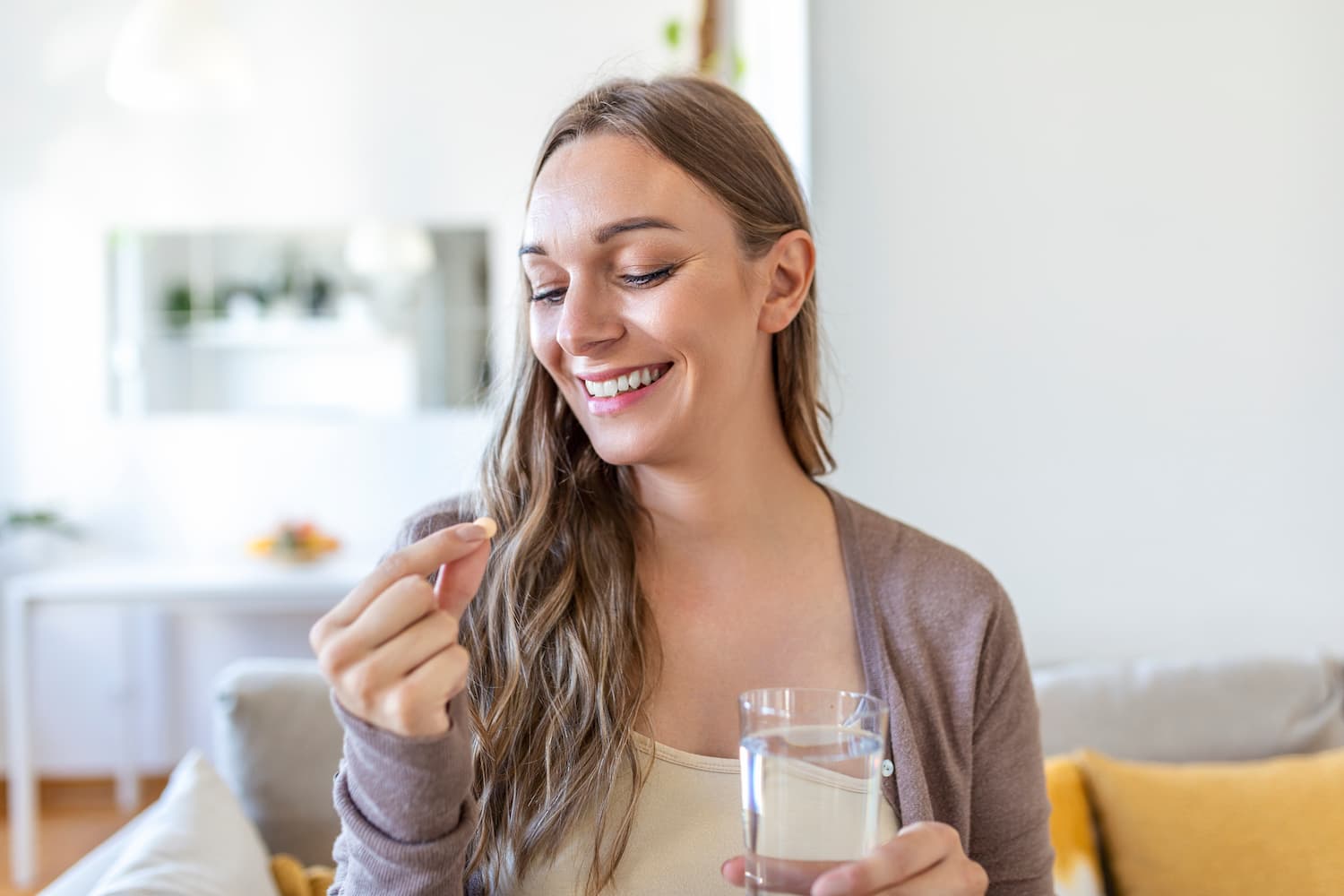
Glutathione is one of the most potent antioxidants for supporting the body's health. Find out how it works and where to get it from.
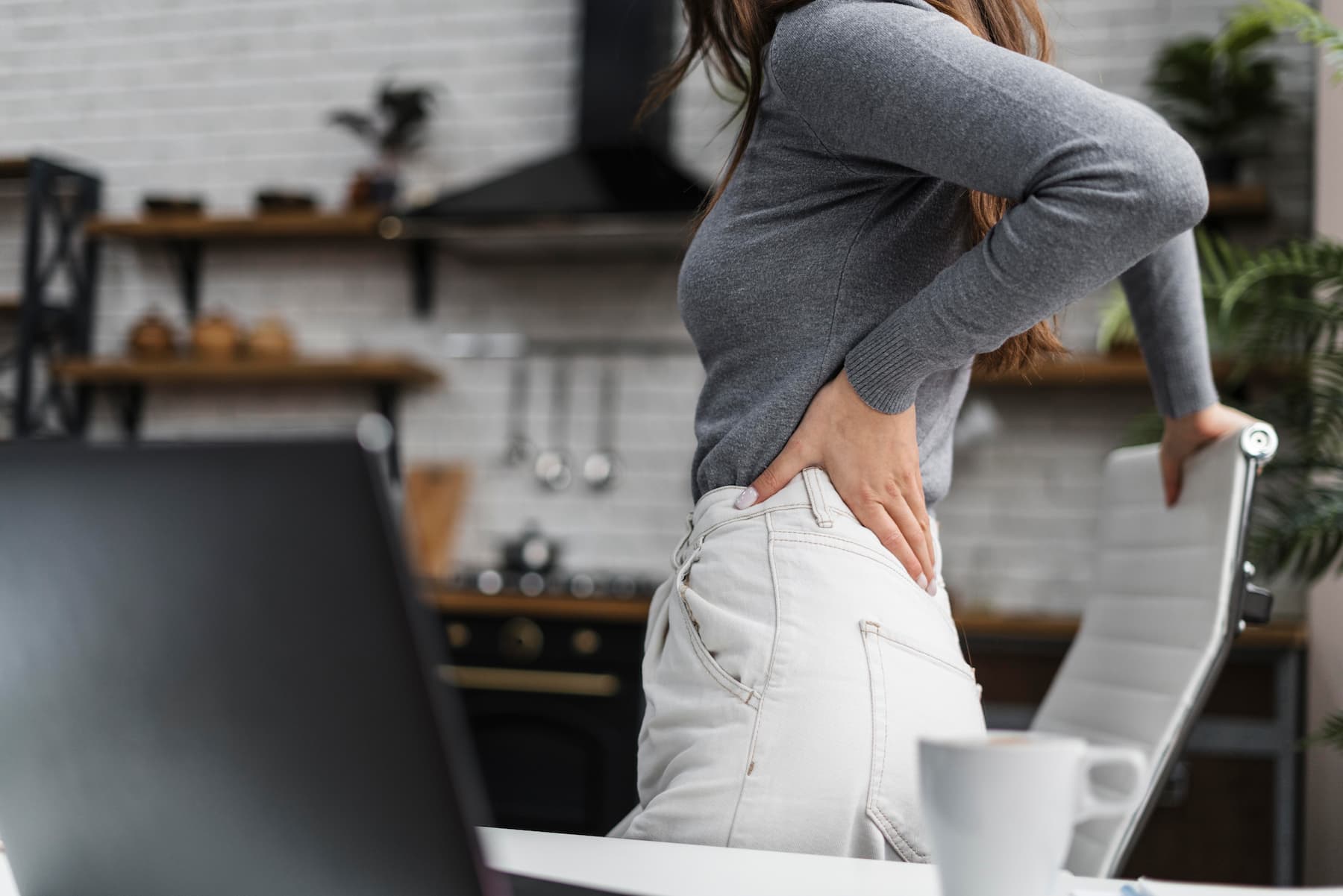
See why hip joints hurt and how to treat their ailments.



